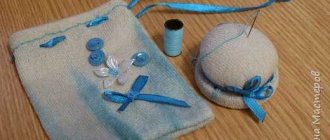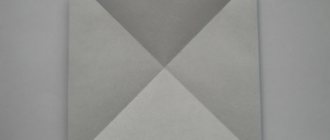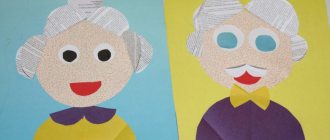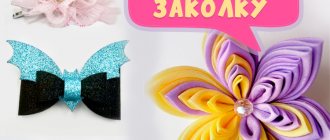Myths and prototypes
An ancient Greek mythological story is associated with hyacinth. Hyacinth is a very handsome prince from Sparta, who was accidentally killed by Apollo during a joint game of discus throwing. Beautiful fragrant flowers sprouted from droplets of the dead young man's blood.
In modern images we see hyacinths in white, blue, lilac, pink, purple, purple and even yellow. This is a bulbous plant with a thick, low peduncle. Small flowers, similar to stars with bent petals-rays, are tightly collected in a pyramidal vertical inflorescence. In general, the flower even seems curly. The stem is framed by two or more smooth, long and narrow leaves.
These features of a real plant are reflected in paper crafts.
Making petals using the quilling technique
There are no special features in this technique - to roll the petal blanks, a special tool or an ordinary pencil with a thin needle at the end is used.
To obtain a lush bouquet, it is advisable to use the maximum number of paper blanks and a variety of floral shades.
Preparing for work
For work we need a very small set:
- Double-sided, medium-weight colored paper.
- Stationery scissors.
- Glue stick or PVA glue.
- Ruler 30 cm.
- Pencil or thick knitting needle.
The color of the paper can be arbitrary: one tone or different shades that combine with each other. For the stem and leaves you will need green paper, preferably in a grassy shade that is closest to the real one.
Materials for work
The list of necessary materials and tools depends on the chosen technique for creating a bouquet. A universal set that will help the master in completing the task:
- Colored paper, cardboard.
- Multi-colored crepe.
- Illustrated paper.
- Glue, scissors.
- Threads, needles.
- Metal wire.
- Decorative elements (beads, rhinestones, ribbons) to decorate the bouquet.
- Iron for processing crepe.
- Quilling kits.
We recommend reading:
DIY polymer clay jewelry: review of the best master class with step-by-step instructions for beginners (150 photos of original ideas)- DIY polymer clay flowers (120 photos of the best ideas) - simple instructions with full description + master class and video tutorials
- Quilling for beginners (200 photos) - step-by-step instructions with description. The best master class on creating quilling crafts with your own hands
An optimally organized workplace is the beginning for correct and consistent work. You will need a wide table and sufficient lighting.
Manufacturing process
To get started, try making a simple hyacinth using our basic step-by-step master class.
Blanks
We cut the green paper into rectangles with sides 5-6 cm and 15-20 cm. These will be the stems. We will need as many blanks as the number of flowers we plan to make.
For the inflorescences, we will also need rectangles of double-sided colored paper - 5 by 20 cm.
Inflorescences
Along the long side of the rectangular blank, we bend the paper to a width of 1 cm. For convenience, especially if we are working with children, we can draw a thin line with a pencil along a ruler.
So, our rectangle is divided into two parts - 1 cm and 4 cm wide. We cut the 4 cm side across to the fold. We make a fringe with a side of no more than 1 cm. You can cut according to pencil markings, or you can do it by eye. This way the petals will look even more natural.
Petals
Now comes the most painstaking stage of the work: each piece of fringe needs to be twisted into a spiral. You can do this with your hands or use improvised materials - a pencil, a knitting needle, a wooden skewer. The more carefully this work is done, the better and neater the appearance of the hyacinth will be.
Stem
We twist the rectangle for the stem diagonally into a tube. We move from the corner, securing the ends of the paper with glue. Let the stem dry.
Leaves
We take green paper again and cut off a rectangle 5 cm wide. We take the length arbitrarily. On one of the wide sides we bend the edge 1 cm, as we did for the flowers. On the other, we cut out the cloves in the form of leaves.
Assembly
- We take a paper tape with prepared petals and begin to wrap it around the stem in a spiral, moving from top to bottom. We secure the upper edge with glue, placing the coils as closely as possible to each other so that the flower is lush.
- Now we also wrap the stem with a blank with leaves. We also secure the ends with glue.
- We bend the green leaves slightly outward and evenly trim the tip of the stem tube.
- We collect the rest of the flowers in the same way.
The bouquet is ready. All that remains is to choose a beautiful vase for it or place it in a pot of suitable size. The pot can be made from a cut plastic bottle. We decorate it with a beautiful piece of fabric or a piece of wrapping paper or cellophane.
Fill the inside of the container with crumpled paper and paper scraps. They can easily strengthen the stems of ready-made flowers.
Where hyacinth flower crafts come in handy
There are several simplest in meaning and idea options in which a plant element of this type can be used. A craft made from hyacinth flowers can be used:
- When preparing gifts for the holiday of March 8th.
- For making a homemade birthday gift for your grandmother, mother, sister.
- To create children's crafts for the "Spring Festival" in kindergarten or school.
- Hyacinth in a pot can be an excellent decor for an office or room.
If flowers are made using the appliqué technique, they can become the central element of the picture.
Hyacinth as a gift to my beloved mother!!! (master class on making a paper flower)
Larisa Savchuk
Hyacinth as a gift to my beloved mother!!! (master class on making a paper flower)
Master class on making paper hyacinth.
To make hyacinth you will need : Multi-colored crepe paper , colored napkins , plastic bottles for making pots , glue, green double-sided paper for leaves , white paper for making stems .
Required materials and tools
The set of tools for any manufacturing method is the same, but the materials may differ. What types of materials can be used:
- Most often, hyacinth is made from corrugated paper. The texture of the material gives the petals lightness and naturalness compared to ordinary colored paper. At the same time, working with such material is not at all difficult.
- To make children's crafts, it is best to use double-sided colored paper. This type of material is more durable than corrugated paper.
- Wire, a wooden skewer, a cocktail tube, or a paper tube can be used as a stem. To finish the first 2 types of warping, green electrical tape, satin ribbons, and green paper can be used.
Much depends on the type of composition. The flower can be placed in a decorative vase, “planted” in a pot, glued to a cardboard sheet, attached to a fabric base, or placed in a box.
To work on a flower you need to prepare scissors, glue, a ruler and a simple pencil. In rare cases, sewing threads or double-sided tape are used for high-quality fastening.
Materials
A minimum set of preparations will be required:
Paper for flowers: blue, blue, lilac, white, pink, crimson, red colors. Real varietal hyacinths come in peach and yellow shades - you can take them, but it is better to stick to the traditional lilac-blue color scheme so that the flower is more recognizable. For stems and leaves - green paper.
What paper can you use to make hyacinth? In fact, there are a lot of manufacturing options; you can also take corrugated ones. This master class describes the simplest flowers - made from thick double-sided paper. Scissors. PVA glue. Ruler and pencil.
How to make hyacinth from paper rings on an oval base
What can a child give to his mother? Of course, a simple DIY craft, and it’s best if it’s a paper flower, since the availability of this material is obvious, and all mothers love flowers. Your child, independently or with a little help from an adult, will be able to make hyacinth from paper rings on an oval base according to the illustrated descriptions that this master class has. The finished flower craft - hyacinth will be a good gift for mom or will decorate a child’s room. So let's start making a flower - hyacinth.
To make a hyacinth flower, prepare:
- purple and green paper;
- scissors;
- glue;
- pencil.
Almost any child can handle this craft with minimal supervision from an adult. The only thing is that you will have to guide the baby, showing him the sequence of the process. First we need to make blanks for the future hyacinth flower, cut the prepared A4 sheets in half. As a result, we got two purple leaves and two green ones.
Draw an oval on one half of the purple paper. This will be the basis for the flower itself.
After this, cut out the drawn oval with scissors.
Fold the remaining half of the purple paper in half.
Cut a sheet of paper into two parts.
Now these purple paper sheets need to be cut into small strips (about 1.5-2 cm wide) for further making rings for the flower - hyacinth.
We twist each strip into a ring and secure it with glue.
We need to make quite a large number of such rings for the flower.
We begin to glue the rings onto the oval hyacinth blank prepared in advance.
In this way we fill the entire surface of the paper oval of the flower.
Now you can start making the stem and leaves of our hyacinth. To create a stem, we begin to fold half a sheet of green paper prepared in advance into a narrow strip.
We grease the edges of the strip with glue, and as a result we get a green stem.
We glue the finished flower stem to the back of our hyacinth.
Fold the other half of the green paper into 4 folds.
From it we cut out the following type of workpiece.
This is how we got 2 green leaves for the hyacinth flower.
We glue them at the bottom of our flower.
Thus, we managed to make a hyacinth from paper rings glued onto an oval base with green leaves and a stem.
This is what our paper hyacinth looks like when the craft is completed.
Step-by-step assembly of a bouquet of flowers
Paper flowers of this type are often collected in bouquets to form a complete composition. Initially, you need to make several branches of flowers. For this, one of the presented techniques can be used.
Next, we make paper hyacinths to form a bouquet:
- When the flower branches are ready, you should start decorating the leaves.
- Cut a rectangle whose height will correspond to half the height of the stem.
- Fold the workpiece like an accordion. The smaller the accordion, the better for the formation of leaves.
- Having assembled the accordion, you need to cut off the edges, sharpening them a little. Then unfold the workpiece.
- Lubricate the stem with glue and gradually wrap the strip with leaves. In this case, each subsequent turn on the stem must be coated with glue again.
Step-by-step photo for finishing a hyacinth stem for a bouquet.
The resulting branches can be wrapped in gift or transparent paper according to the same principle as bouquets of fresh flowers. The bases should be tied with tape. The souvenir is ready for donation.
Varieties of crafts with assembly diagrams
To form blooming arrows of hyacinths, it is worth using a master class suitable for the composition with a detailed algorithm. Thanks to some types of schemes, you can create a flower with a natural shape and type of buds. In each case, everything is described in more detail in step-by-step diagrams.
Origami with diagram
The easiest way is to make a hyacinth sprig from colored paper. This manufacturing principle is referred to as the origami technique. Even a small child can cope with such a task, since the assembly process is represented by a complex of elementary actions:
- Cut a sheet of A4 colored paper into 2 equal parts along the length of the side.
- Fold a 1 cm wide strip along the larger side.
- Divide the entire length into equal narrow strips. Cut the workpiece into divisions until the longitudinal strip bends.
- Using scissors, twist the resulting strips in one direction.
- Prepare a 0.5 cm wide strip of green paper. Grease a long wooden skewer with glue and screw the strip onto the base.
- Then wind the flower blank in tiers according to the same principle as the green part.
- Make leaves by folding the rectangle like an accordion and cutting off the tops. Then glue the workpiece to the base.
By preparing several elements, you can create a beautiful bouquet of spring flowers.
Video master class in quilling technique
A simple example of applique using the quilling technique
Applications for children
For children, the best technique is appliqué. This also applies to crafts in which hyacinths occupy a central place. In kindergarten or elementary school, children can be offered this option for making an applique:
- Cut out an oblong oval from colored paper. Glue the blank onto a sheet of cardboard.
- Make a striped stem and teardrop-shaped leaves from green paper.
- Glue these parts at the base of the oval.
- Prepare many strips 4-5 mm wide and 2-3 cm long. Glue each strip in the form of a ring.
- Place all the rings around the perimeter of the oval in any order.
The main advantage of this craft is that all the elements are completely simple, and the result is a voluminous applique.
Origami
The origami technique is a little more difficult to work with. Children who have mastered the previous scheme will no doubt cope with this one. You will learn right now how to make truly spectacular hyacinths:
- A sheet of A4 colored paper is cut vertically into two halves.
- Along the larger side, make a slight bend 1 cm inward so that a clear line appears.
- From the opposite end towards the fold, uniform frequent cuts are made along pre-designated lines. The stripes must be the same width. The narrower they are, the more spectacular the flower will be.
- The resulting “rags” need to be twisted in the same direction, overlapping a strip a centimeter wide. You can do this with scissors, simply winding the paper on them. The inflorescence is ready.
- A half-centimeter wide strip of green paper needs to be wound onto a stem coated with glue from a wooden skewer or cocktail tube.
- Using the same principle, the inflorescence is wound in tiers. Instead of glue, you can apply double-sided tape to the free edge of the workpiece.
- The leaves are made using the method described in the general manufacturing model and attached to the base.
Several sprigs of different colors will turn into an attractive spring bouquet.
Using paper napkins
What do we need for this?
- green paper;
- several napkins;
- pencil or any similar object;
- scissors;
- glue stick;
- a little foam rubber of a dark shade;
- a flower pot or an unnecessary glass.
Let's get started:
We cut a sheet of green paper in half, set aside one part, roll the second into a tube using a pencil, and then take it out. Apply glue to the edge of the paper and glue the tube. Thus, we made a stem for our hyacinth.
We take our napkins, but do not unfold them, and cut them into nine equal squares. Our squares turned out to be multi-layered, so we cut them so that each square has one layer.
We take one resulting square and place a pencil in the middle with the opposite end, lift the edges of the napkin with our fingers and press them to the pencil.
Hold the edges of the napkin with your fingers and apply glue in the middle. Pay attention to the photos, they will help you not get confused and do the craft correctly.
Without removing the pencil, we cover one of the holes in our stem with this square of napkin. Now remove the pencil. Let's do the same thing, only now we'll seal the other hole in the stem.
Glue several pieces of napkin close to each other along the edge of the stem in order to make the first row. So you need to make as many rows as you see fit. It's a matter of taste here.
We still have one more piece of green paper left. We cut out several oblong strips from it; they will serve as leaves for the hyacinth.
Next, you need to apply glue to the bottom of our leaves and attach them to the stem from below.
Let's put the pre-prepared foam rubber in our pot, make a hole in the middle with scissors to put the resulting flower there.
Making paper hyacinth is not difficult. Be sure to try it!
Craft hyacinth
Hyacinth is one of the first beautiful flowers to bloom in spring.
They are grown both outdoors and at home. They come in different varieties and colors. Therefore, crafts made from various materials depicting these beautiful flowers are quite popular as a gift for International Women's Day, which is celebrated on March 8. The easiest way for children to make hyacinths with their own hands is from napkins or paper. In this article I will show you two of the simplest ways to make three-dimensional crafts with hyacinth flowers from these materials.
Craft hyacinth from paper napkins
My eldest daughter made a hyacinth craft from paper napkins during a children's creativity class when she was 6 years old. And then at home she showed me exactly how she made it.
We added leaves to this version of the craft, “planted” a flower in a pot from a yogurt cup, and the work took on a more finished look. This technique is called trimming, this way you can make different crafts.
Materials and tools
- green colored paper
- several identical paper napkins (you can use corrugated paper instead of napkins)
- pencil (color is not important)
- scissors
- glue stick (PVA glue makes napkins quickly get wet and tear)
- small flower pot or yogurt cup
- a piece of dark foam rubber
Stages of work
- Cut a piece of green paper in half. Set aside one half and roll the other half into a thin tube using a pencil. Take out the pencil. Apply glue to the edge of the paper and glue the tube. This will be the flower stem.
- Without unfolding, cut each napkin into 9 identical squares (exactly as for the “Heart made of napkins”) craft.
- The resulting squares will consist of several layers. Cut each into individual single-layer squares.
- Take one square, place the blunt end of a pencil in its middle, lift the edges of the napkin with your fingers and press them to the pencil.
- Holding the edges of the napkin with your fingers, apply glue to its middle.
- Without removing the pencil, seal one of the holes in the tube with this piece of napkin, then remove the pencil.
- In the same way, press another piece of napkin to the pencil, apply glue to it and glue it to the same edge of the tube on the side.
- Glue several pieces of napkin close together along the edge of the tube to form the first row.
- Make the required number of next rows in this way.
- From the remaining half sheet of green paper, cut out several long leaves.
- Apply glue to the bottom of the leaves and glue them to the tube (stem) from below.
- Place the foam rubber in a yogurt cup, use the tip of a pair of scissors to make a hole in the middle and insert a flower into it.
A piece of foam rubber of the required size can be cut from a dishwashing sponge (together with a hard layer, this layer should be placed on top). If you don’t have foam rubber, you can wrap a piece of cotton wool in felt or fleece. It is extremely undesirable to use plasticine for this, since it makes the paper greasy and the craft loses its beautiful appearance over time.
Craft hyacinth from corrugated paper
Another option for making hyacinth is from corrugated paper. The method is well known, but in my opinion, it is one of the easiest and fastest. If there is no corrugated paper, you can make hyacinth from plain paper or napkins in the same way.
Manufacturing instructions are in my book “Corrugated Paper Flowers”. The text is not visible, but from the photo and without the text everything is clear.
These are hyacinth flowers made from corrugated paper that I made (reduced originals of photographs attached to the manuscript when it was sent to the publishing house).
And another photo of flowers with a white background.
I suggest looking at other articles from the “Crafts for March 8th” section or other articles with the “Flowers” tag. For example, flowers that you can give to your mother on March 8 and not only for this holiday: instructions for making beautiful flowers using the origami technique, a basket with flowers made of plasticine on a CD, etc.
Yulia Valerievna Sherstyuk, https://moreidey.ru
All the best! If the site materials were useful to you, please share a link to them on social networks - you will greatly help the development of the site. Posting site materials (images and text) on other resources without the written permission of the author is prohibited and is punishable by law.
Hyacinth made of multi-colored paper
Flowers made with your own hands from paper will decorate your home and add coziness.
What do we need for this?
- yellow and green paper;
- toothpick;
- office glue.
Let's get started:
Let's take yellow paper and cut out a 6x14 cm rectangle from it. Cut the green paper into 2 parts - a 6x15 cm rectangle and a 6x6 cm square. The yellow paper will be our flowers, and the green paper will be stems and leaves.
Making petals from colored paper
Having prepared the necessary materials, you can begin to work. Beginning craftsmen should use the instructions on how to make a beautiful hyacinth with their own hands:
- Place a sheet of colored paper in front of the master's face.
- Bend a small strip along the long axis of the leaf - this will attach future petals to the stem.
- Cut thin strips (about 1.0 cm) down to the folded strip.
- The resulting fringes should be rolled to the base.
Thus, you should make several preparations to get a lush bouquet of hyacinth. For variety, it is worth choosing several different flowers - they will create a beautiful and original decor for a gift bouquet.
Corrugated paper hyacinth
What do we need for this?
- colored corrugated paper;
- green and white paper;
- office glue;
- pencil;
- a narrow satin ribbon no more than half a meter long;
- scissors;
Let's get started:
Let's make a pot from a plastic bottle. We crumple a sheet of paper and put it into the resulting pot.
We take half a sheet of paper and, using a pencil, twist it into a kind of tube, and cut it at the bottom and glue it to a lump of paper - this will be a hyacinth stem.
Blanks using the trimming method
Multi-layer napkins or paper towels are ideal for trimming. You can also use crepe paper.
- We fold paper napkins several times and cut them into small squares with a side of 2-3 cm. It is not necessary to do this very evenly and achieve absolute uniformity.
- We take such a piece, place the tip of a pencil or skewer in the center, bend the corners of the paper towards the stick, and twist it a little.
- Then lightly dip the tip with the paper into glue and attach it to the base.
- So step by step we fill the entire space of the cylinder. The closer you place the elements to each other, the more natural and voluminous the flower will turn out.
The cutting method is easy to make planar and three-dimensional applications with young children. The technique develops motor skills, spatial and figurative thinking.
Sources
- https://mld-mobile.ru/iz-bumagi/giacinty-svoimi-rukami-iz.html
- https://HobbyLaby.ru/raznoe/giacint-iz-bumagi.html
- https://e-ipar.ru/cvety-iz-bumagi/giatsint
- https://topotushky.ru/svoimi-rukami/giacint-iz-bumagi-vidy-origami-i-osobennosti-sozdaniya-cvetkov.html
[collapse]
Manufacturing
Roll up fairly thick tubes from white paper and cover the bottom with green paper. Secure the stems in any suitable container. Napkins for flowers are cut into squares of different sizes, they are fixed to the stem using the trimming method.
A wooden stick is placed in the center of the square, paper is pressed around the stick, obtaining a so-called end tube. Apply glue to the desired place on the stem, and press the trim to this place.
Process the entire stem to the desired length. Narrow lanceolate leaves are cut out of green paper and glued. From a distance, such flowers cannot be distinguished from real double hyacinths!










